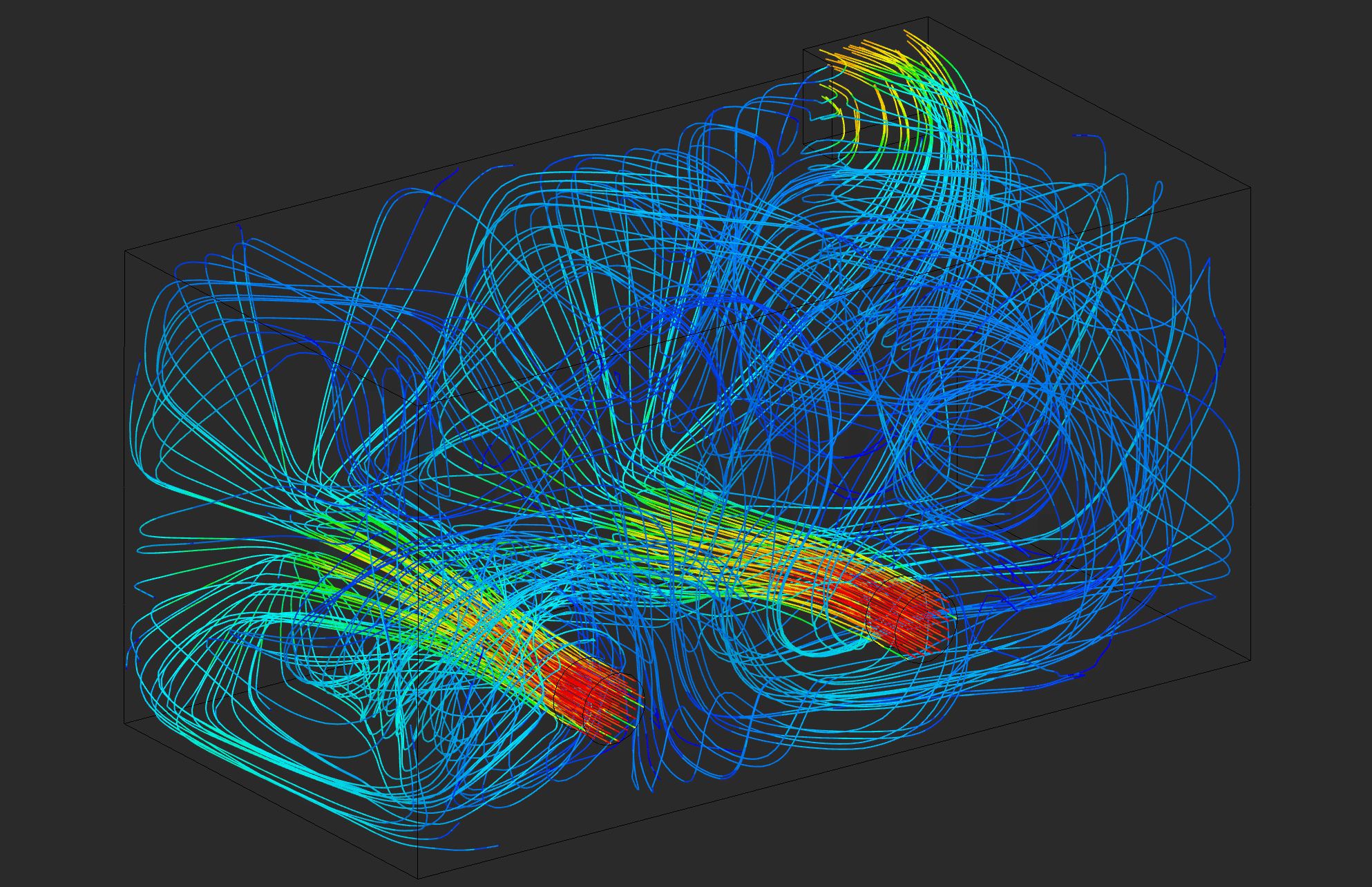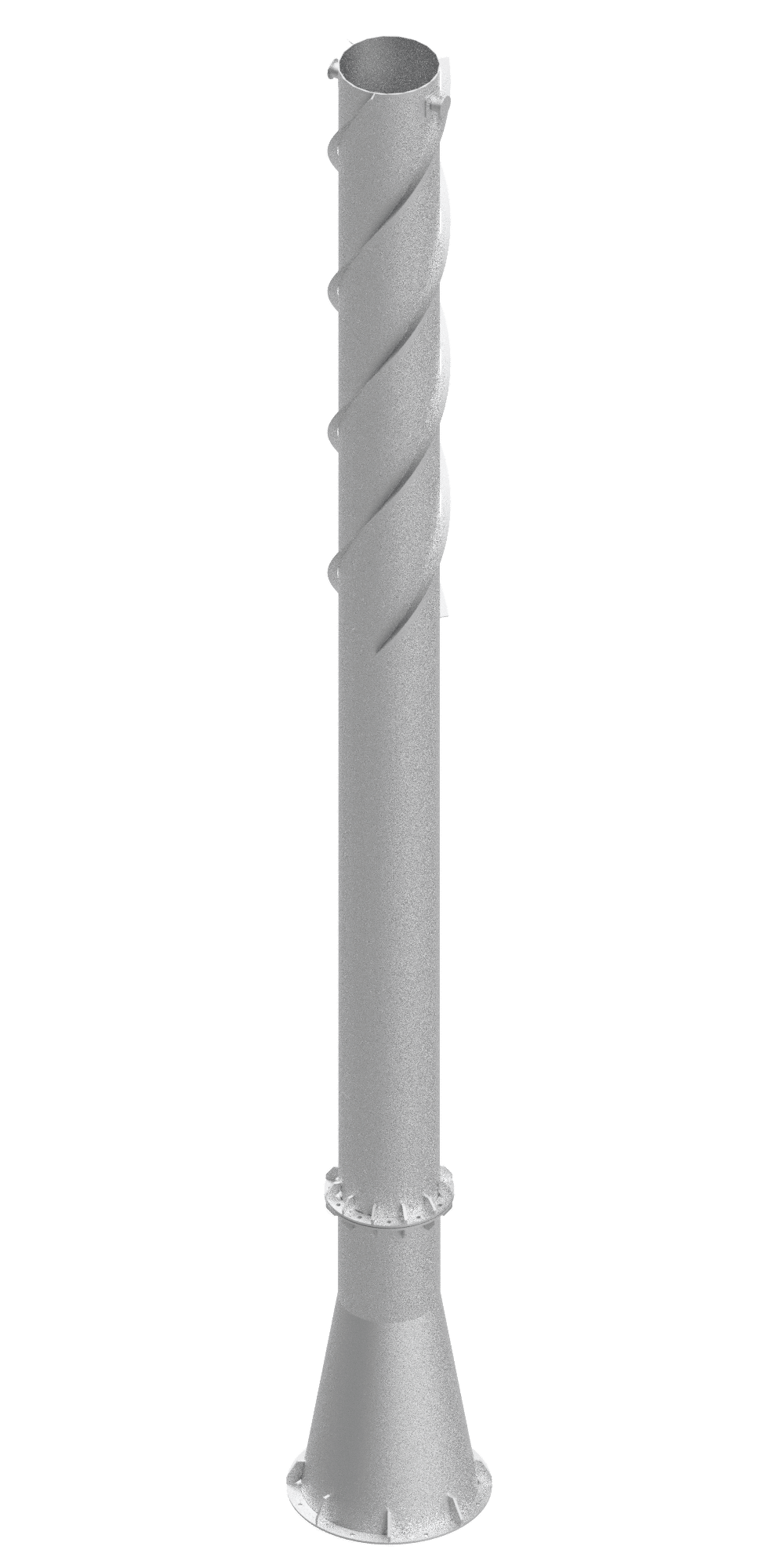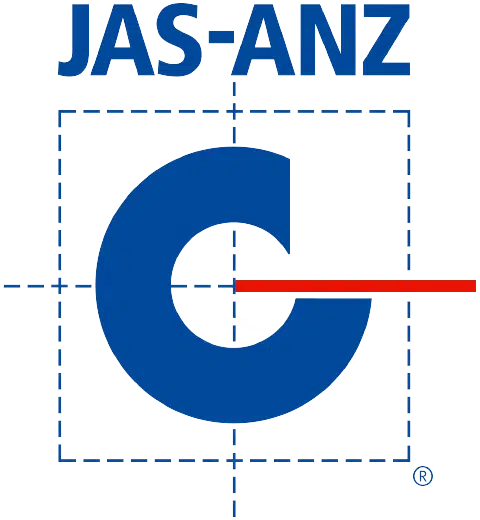Cremators
MacroBurn Cremators
MacroBurn Cremators are used for the combustion of bodies to form flue gas, ash, mineral fragments, and heat. Cremation is normally part of a funeral or post-funeral rite, as an alternative to complete burial. Cremated remains pose no health risk, and is either buried at cemeteries, interred in memorial sites, or scattered
With many religions having strict rules on cremation, the popularity of cremation differs greatly between communities and countries. Cremation has also been advocated for public health reasons, due to the diminishing area for cemeteries, and environmental concerns.
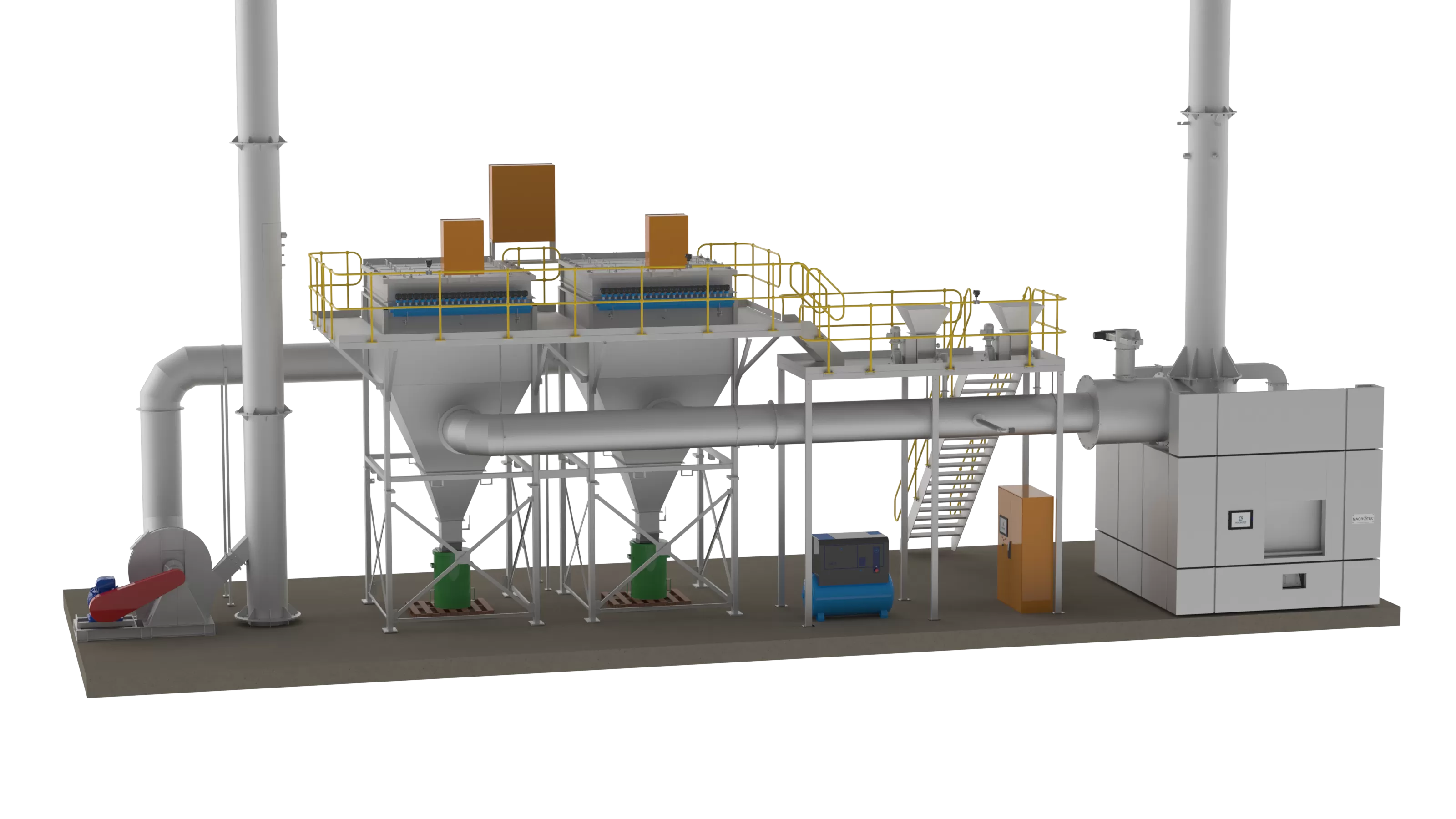
Isometric View: MacroBurn W150 with filtration system
Lowest Emissions
Our cremators have been optimised to minimise emissions, with large combustion and settling chambers, recirculated combustion air, and high output process burners. A Macrotec flue gas Scrubbing and Filtration system can be added as needed.
Fuel Efficiency
We aim to optimize fuel efficiency to the maximum, and carefully evaluate the OPEX vs CAPEX model for each client. To this end we have industry leading refractory thickness and insulation, recirculated combustion air, pre-heated combustion air, and modulating process burners.
Quality
Our objective is to design and manufacture Quality Cremators, that have low emissions, are fuel efficient, easy to operate, and with low maintenance requirements.
Certification
Macrotec is certified to the following standards:
ISO 9001:2015 | Quality Management Systems
ISO 14001:2015 | Environmental Management Systems
ISO 45001:2018 | Occupational Health & Safety Management
Design
Our cremators are two chamber units, and are fitted modulating process burners, automated door, and combustion fan, with optional items such recirculating combustion air, pre-heated combustion air, and loading bier.
Stack
The standard stack height on our cremators ranges from 7m to 15m, depending on the model size, with taller stacks optional. Our stacks are taller than most of our competitors for good reason, the increased height increases the draft, increasing the velocity of the flue gas, releasing it at greater height, resulting in better dispersion.
According to EPA (Environmental Protection Agency – USA), Good Engineering Practice for stacks is calculated as H + 1.5L, where H is the height of the building itself or any significant nearby structure or structures and L is the lesser of the projected height or width of the building in question. If this is applied to the typical building in a remote setting, away from larger building, a minimum stack height of 7m would be recommended. This needs to be calculated on a site-by-site basis and might require a taller stack.
Automated Door
Our cremators are fitted with an automated hydraulic door for easy and safe operation.
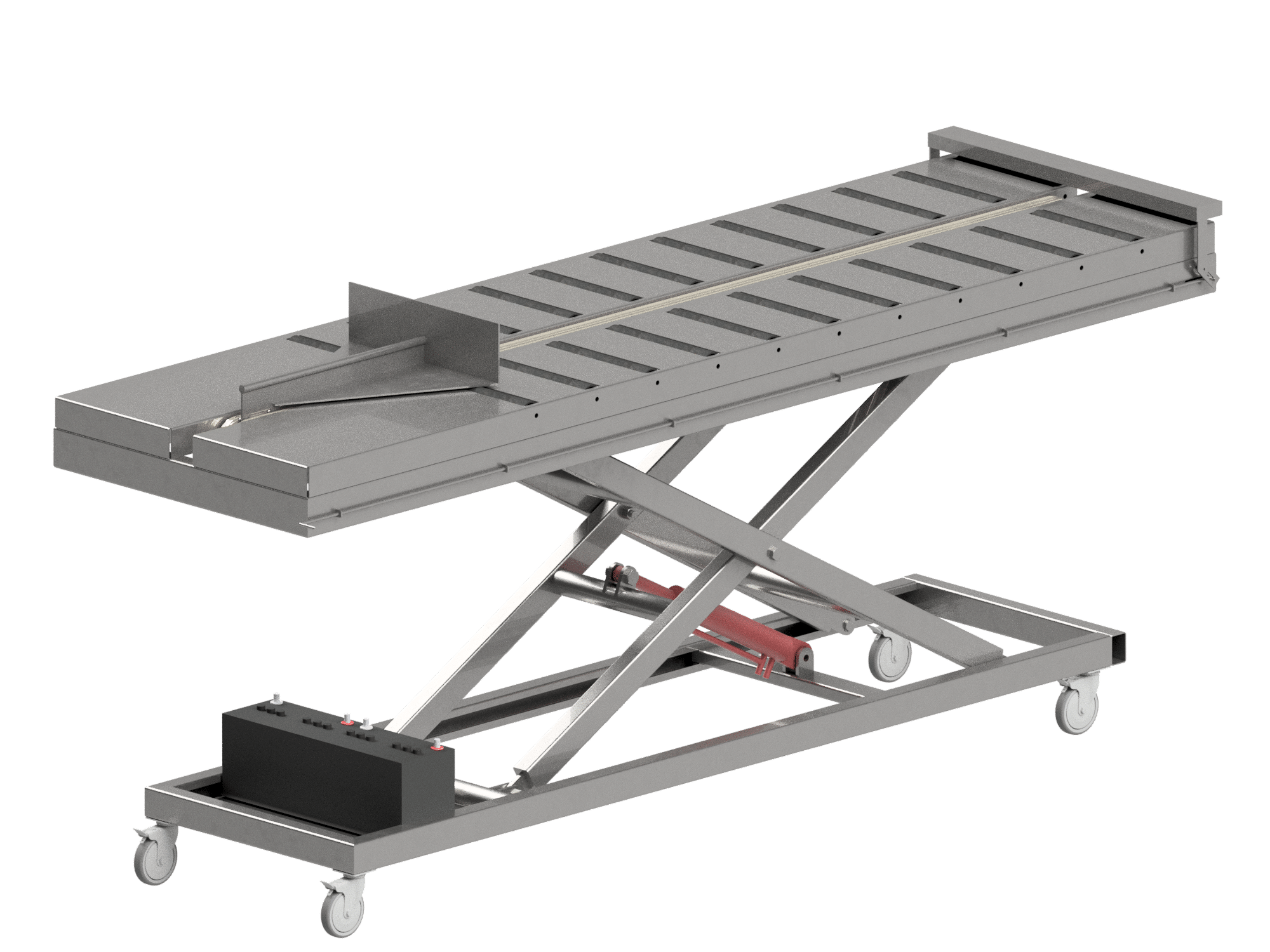
Loading Bier (Optional)
We offer both manual and auto loading biers, which assist crematorium staff with moving the body from the hearse to the mortuary, to the cremator, and loading of the body into the cremator. The manual bier has a manual hydraulic pump to lift the bier into place, with the auto option not only lifting the bier into place but pushing it into the cremator as well.
Modulating Process Burners
Our cremators are fitted with modulating process burners, that offer much higher reliability and control. Burner placement has been optimized for thermal dispersion to speed up cremation times and minimise cold spots. Our burners also fully modulating, allowing for much finer control and thus more fuel-efficient operating.
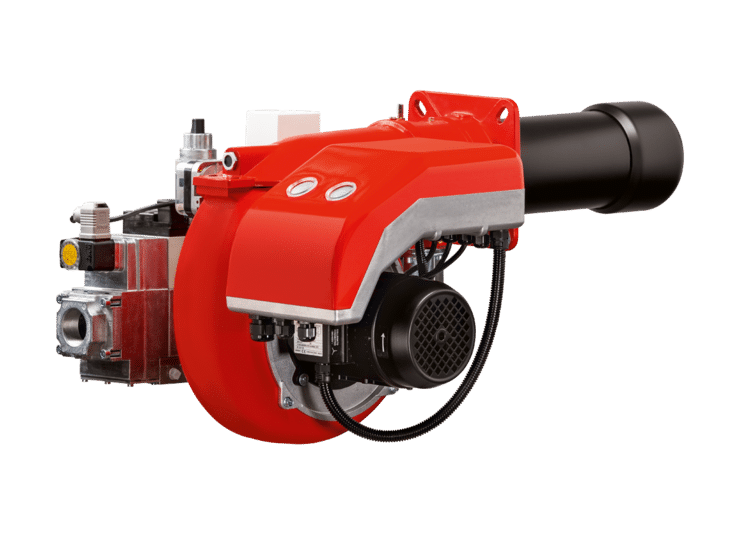
Combustion Air
The standard combustion air equips the cremator with a combustion fan delivering high velocity through multiple nozzles. Nozzle size, placement and air velocity has been carefully optimized through Computation Fluids Dynamics (CFD) analysis to ensure thorough mixing of combustion gasses and minimizing dead spots.
Recirculated Combustion Air (Optional)
We offer recirculated combustion air on our cremators, for improved combustion and emissions. This is done by using a high temperature fan to circulate a portion of the flue gas back into the cremator, mixing in fresh air to maintain a set temperature and oxygen percentage in the combustion air. This results in combustion air at around 200-250˚C, with lower NOx and CO emissions.
Pre-heated Combustion air (Optional)
Our pre-heated combustion air option employs a shell and tube heat exchanger to heat the incoming combustion air using the hot flue gas. Combustion air is heated to 250-300.
CFD Simulations
CFD (computational fluid dynamics) simulation is done on each cremator we design to optimize the design and operation. We use CFD to optimise:
- Chamber sizes and dimensions to help reduce cold spots and shortcuts
- Burner placement to optimise the distribution of thermal energy
- Fan placement to optimise mixing of oxygen and flue gas and overall turbulence
